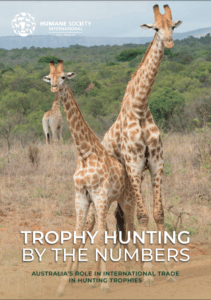One of the most important global meetings on wildlife trade has just wrapped up in Uzbekistan. It’s capital city Samarkand was where governments convened for the 20th Conference of the Parties (CoP20) to the Convention on International Trade in Endangered Species of Wild Fauna and Flora (CITES) to decide how international trade should be managed for some of the world’s most threatened...
Trophy hunting involves the killing of wildlife purely for the purpose of displaying parts of the animal – often the head or skin. Trophy hunting occurs worldwide and includes hunting for species threatened with extinction. Globally, imports of over 97,000 trophies of mammal species protected under the Convention on International Trade in Endangered Species of Wild Fauna and Flora (CITES) were recorded between 2014 and 2018. The conservation, ethical and welfare impacts from hunting are substantial.
Trophy hunting is unsustainable, often killing the strongest individuals, changing population structures, and reducing population viability. Trophy hunting also negatively impacts conservation through reinforcing the perception of animals as commodities. The advertising of trophy hunting and the sharing of trophy images on social media works against appreciation of animal sentience and respect for the intrinsic value of individual animals and species.
This report investigated Australia’s role in hunting of mammal species protected under CITES. The report finds that despite our small population size, Australians make a substantial contribution to the trade in trophy hunting. Using data from the CITES Trade Database and the Australian Government, this report has identified that Australia ranked tenth in the number of global trophy imports for 2014–2018 with 827 trophies from 40 different species.



